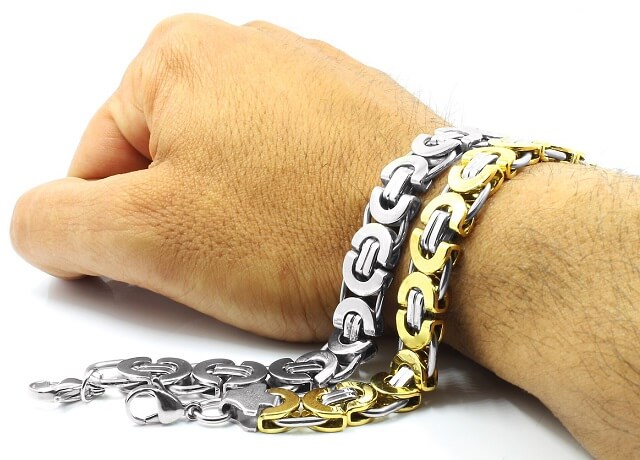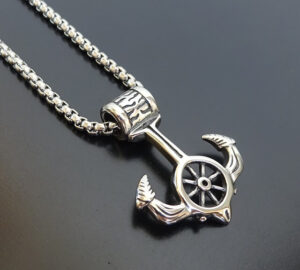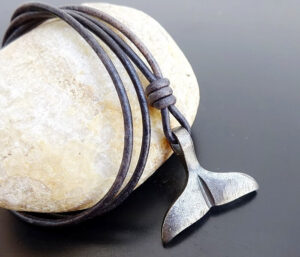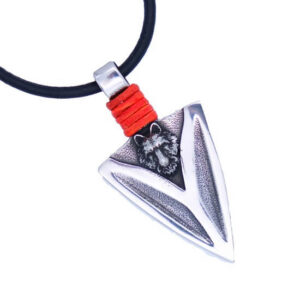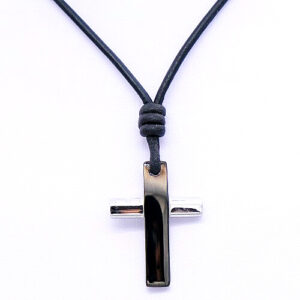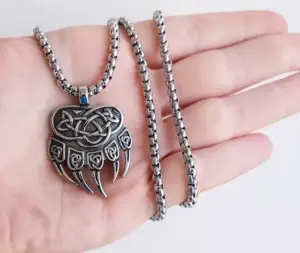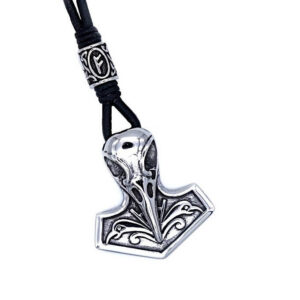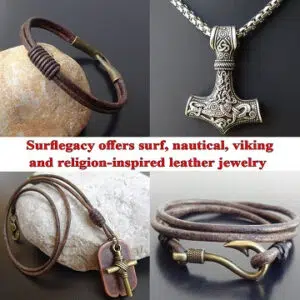Explore the essential factors in the “stainless steel vs sterling silver” debate as we compare durability, aesthetics, hypoallergenic properties, and more to help you make the best choice for your jewelry collection.
Are you struggling to decide between stainless steel and sterling silver for your next piece of jewelry?
As you weigh the pros and cons of these two popular materials, it’s crucial to consider factors such as durability, appearance, and care requirements.
In this comprehensive guide, we’ll dive deep into the “stainless steel vs sterling silver” debate to provide you with all the information you need to make an informed decision that suits your personal style and preferences.
Stainless Steel vs Sterling Silver: Material Basics
What is Stainless Steel?
Stainless steel is an alloy made from a combination of iron, carbon, chromium, and other metals. It is well-known for its strength, durability, and resistance to corrosion, making it a popular choice for various industries, including jewelry.
Definition and composition of stainless steel
Stainless steel is defined by its chromium content, which must be at least 10.5% of the alloy. The chromium forms a protective layer of chromium oxide on the surface, providing resistance to rust and corrosion. Other elements like nickel, molybdenum, and nitrogen can be added to the mix to enhance specific properties.
Different types of stainless steel used in jewelry
There are several types of stainless steel used in jewelry making, but the most common are:
- 304 Stainless Steel: Also known as “A2 stainless steel,” this grade is resistant to corrosion and oxidation. It is often used for fashion jewelry and costume pieces.
- 316L Stainless Steel: Known as “marine grade” or “surgical stainless steel,” this type has a higher corrosion resistance due to the addition of molybdenum. It is a popular choice for body jewelry and high-quality fashion pieces.
Advantages and disadvantages of stainless steel jewelry
Advantages:
- Highly resistant to rust, tarnish, and corrosion
- Durable and strong, making it suitable for daily wear
- Affordable compared to precious metals like gold and silver
- Available in various finishes, such as polished, brushed, and matte
- Hypoallergenic for most people, especially 316L stainless steel
Disadvantages:
- Heavier than other metals, which may be uncomfortable for some wearers
- Not as malleable as precious metals, limiting intricate design options
- Can be challenging to resize or repair if damaged
What is Sterling Silver?
Sterling silver is a popular metal used in jewelry, tableware, and various decorative items. It is an alloy consisting mainly of silver, with a small percentage of other metals added for strength and durability.
Definition and composition of sterling silver
Pure silver, also known as fine silver, is too soft for most practical applications. Therefore, it is typically combined with other metals, like copper, to create a more durable alloy.
Sterling silver is made up of 92.5% silver and 7.5% other metals, usually copper. The 92.5% silver content is why you often see the “925” hallmark stamped on sterling silver items.
Why it’s called “sterling”
The term “sterling” originates from the Old Norman word “esterlin,” which means “little star.” This word was later anglicized to “sterling.”
In the 12th century, a series of coins in England, known as “sterlings” or “sterling pennies,” were made of 92.5% silver. Over time, the term “sterling” became synonymous with high-quality silver, and the name has persisted ever since.
Advantages and disadvantages of sterling silver jewelry
Advantages:
- Classic, timeless appearance that complements various styles
- Highly malleable, allowing for intricate and detailed designs
- More affordable than gold or platinum, yet still considered a precious metal
- Hypoallergenic for most people, making it suitable for sensitive skin
- Can develop a beautiful patina over time, adding character to the piece
Disadvantages:
- Prone to tarnishing, which requires regular cleaning and maintenance
- Softer than stainless steel, making it more susceptible to scratches and dents
- May react with certain chemicals or substances, causing discoloration
- Not as strong or durable as stainless steel or other metals, making it less suitable for everyday wear
Stainless Steel Durability
When comparing stainless steel vs sterling silver, durability is a key factor to consider. Here, we’ll explore the various aspects of stainless steel that contribute to its impressive resilience.
Resistance to tarnish, rust, and corrosion
Stainless steel’s high chromium content makes it resistant to tarnish, rust, and corrosion. The chromium reacts with oxygen to form a thin, invisible layer of chromium oxide on the surface, protecting the metal from further oxidation.
This protective layer is self-healing, meaning that if it’s scratched or damaged, it will quickly reform, ensuring the metal remains resistant to corrosive elements.
Hardness and scratch resistance
Stainless steel is significantly harder than sterling silver, making it more resistant to scratches and dents. Its strength and durability make it an excellent choice for jewelry that is frequently worn or exposed to potential damage, such as rings, bracelets, and watches.
How stainless steel fares for everyday wear
Thanks to its resistance to tarnishing, rusting, and corrosion, stainless steel is an ideal choice for everyday wear.
Its durability ensures that your jewelry will maintain its appearance and integrity for years to come, even with constant exposure to elements like sweat, water, and body oils.
Additionally, stainless steel’s scratch resistance means your pieces will remain looking new and polished with minimal maintenance.
Sterling Silver Durability
While sterling silver is a popular choice for jewelry, it’s essential to understand its durability characteristics to ensure you make the right decision for your needs.
Tendency to tarnish and develop patina
One of the main drawbacks of sterling silver is its tendency to tarnish over time. This occurs when the metal reacts with sulfur-containing substances, like pollutants in the air or certain chemicals in cosmetics and lotions.
Tarnishing results in a darkening or discoloration of the metal, which may be undesirable for some wearers.
However, some people appreciate the patina that develops, as it can add a unique, vintage character to the jewelry.
Softness and susceptibility to scratches
Sterling silver is a softer metal compared to stainless steel, making it more susceptible to scratches, dents, and other forms of wear. It may not be the best choice for jewelry pieces that are subject to daily wear and tear, such as rings or bracelets that come into frequent contact with other surfaces.
Care required for long-lasting sterling silver jewelry
To maintain the appearance and longevity of sterling silver jewelry, proper care is essential. This includes regular cleaning to remove tarnish and prevent the buildup of dirt and grime.
Using a soft polishing cloth or a gentle silver cleaner will help maintain the luster of your jewelry.
Additionally, avoid exposing your sterling silver pieces to harsh chemicals or abrasive materials, and store them in a dry, cool place when not in use.
With proper care, sterling silver jewelry can remain beautiful and last for years to come.
Aesthetics and Style: Comparing the Look and Feel
When choosing between stainless steel and sterling silver, the appearance and style of the jewelry play a significant role in your decision. Let’s delve into the aesthetic characteristics of stainless steel.
Stainless Steel Aesthetic
Variety of finishes (polished, brushed, etc.)
Stainless steel offers a wide range of finishes, allowing for diverse looks and styles. The most common finishes include:
- Polished: A high-gloss, reflective finish that gives the jewelry a shiny, mirror-like appearance.
- Brushed: A matte finish achieved by brushing the surface with a fine abrasive, resulting in a subtle, textured look.
- Satin: A finish that falls between polished and brushed, offering a smooth surface with a soft sheen.
Polished Stainless Steel
Brushed Stainless Steel
Polished and Brushed
Mirror polished
Modern and industrial appeal
Stainless steel jewelry often has a modern and industrial aesthetic, making it a popular choice for those seeking a contemporary, minimalist look. The metal’s inherent strength and durability lend well to bold, geometric designs, and its resistance to tarnish ensures the jewelry maintains a clean, sleek appearance.
Popular styles in stainless steel jewelry
Some popular stainless steel jewelry styles include:
- Cuff bracelets: Thick, sturdy bracelets that make a statement and can be worn alone or stacked with other pieces.
- Link chains: Strong, durable chains that come in various thicknesses and styles, such as curb, Figaro, or wheat chains.
- Spinner rings: Rings featuring a rotating outer band that can be spun around the inner band, often used for stress relief or meditation.
- Men’s jewelry: Stainless steel is a popular choice for men’s jewelry, including rings, bracelets, and necklaces, due to its durability and modern aesthetic.
Sterling Silver Aesthetic
Sterling silver is a popular choice for jewelry because of its attractive appearance and versatile design possibilities. Let’s explore the unique aesthetic qualities of sterling silver.
Classic and timeless appearance
Sterling silver has a classic, timeless appearance that appeals to a wide range of tastes and styles. Its bright, lustrous finish exudes elegance and sophistication, making it suitable for both casual and formal occasions. The enduring appeal of sterling silver has made it a staple in the world of jewelry for centuries.
Versatility in design
Due to its malleability, sterling silver is highly versatile in design. It can be easily molded and shaped into intricate, detailed patterns, or hammered and textured for a more rustic, artisanal look. This flexibility makes sterling silver an ideal choice for a variety of jewelry styles, from delicate, filigree pieces to bold, statement designs.
Popular styles in sterling silver jewelry
Some popular sterling silver jewelry styles include:
- Charm bracelets: Bracelets adorned with a collection of small, decorative charms that represent personal interests, experiences, or milestones.
- Stacking rings: Thin, delicate rings designed to be worn together on a single finger, creating a layered, customized look.
- Pendant necklaces: Necklaces featuring a single pendant or charm on a silver chain, often showcasing gemstones, initials, or meaningful symbols.
- Hoop earrings: Classic, versatile earrings that come in various sizes and thicknesses, ranging from small, delicate hoops to large, bold statement pieces.
The timeless elegance and design versatility of sterling silver make it a popular choice for those seeking jewelry that complements a wide range of outfits and occasions.
Hypoallergenic Properties: Sensitive Skin Considerations
When selecting jewelry, it’s essential to consider the hypoallergenic properties of the materials, especially for those with sensitive skin or metal allergies. Let’s discuss the factors that make stainless steel a viable option for those with sensitivities.
Stainless Steel and Allergies
Nickel content and hypoallergenic stainless steel grades
Although stainless steel is an alloy containing various metals, its hypoallergenic properties make it a suitable choice for many people with sensitive skin or metal allergies. The key to its hypoallergenic nature lies in the specific grade of stainless steel used.
The most common type of stainless steel used in jewelry, 316L, is often referred to as “surgical stainless steel” due to its hypoallergenic properties.
It contains a minimal amount of nickel, significantly reducing the risk of allergic reactions.
Additionally, the chromium oxide layer that forms on the surface of stainless steel helps to prevent direct contact with the nickel content, further reducing the risk of irritation.
How to choose the right stainless steel jewelry for sensitive skin
To ensure that you select the best stainless steel jewelry for sensitive skin, consider the following tips:
- Look for 316L stainless steel: Choose jewelry made from 316L stainless steel, as it has a lower nickel content and is specifically designed for its hypoallergenic properties.
- Check for quality: Ensure that the jewelry is well-made and free from defects that could cause irritation, such as sharp edges or uneven surfaces.
- Ask the seller: If you are unsure about the type of stainless steel used in a particular piece of jewelry, don’t hesitate to ask the seller or manufacturer for more information about the materials.
By following these guidelines, you can confidently choose stainless steel jewelry that is both stylish and gentle on sensitive skin.
Sterling Silver and Allergies
While sterling silver is generally considered a hypoallergenic metal, some individuals may still experience allergic reactions due to the alloy’s composition. Let’s explore the factors that contribute to these reactions and how to find hypoallergenic sterling silver jewelry.
Allergic reactions to sterling silver
The primary cause of allergic reactions to sterling silver is its copper content, which makes up 7.5% of the alloy. Copper can cause skin irritation and allergic reactions in some individuals. However, it’s worth noting that reactions to sterling silver are less common than those to other metals, such as nickel.
Tips for finding hypoallergenic sterling silver jewelry
If you have sensitive skin or a known metal allergy, consider these tips when searching for hypoallergenic sterling silver jewelry:
- Look for higher silver content: Some sterling silver jewelry contains more than the standard 92.5% silver content, which may reduce the risk of irritation. Jewelry marked with “930” or “960” has a higher silver content, resulting in a lower percentage of copper or other potentially allergenic metals.
- Opt for argentium silver: Argentium silver is a modern alternative to traditional sterling silver. It contains a higher percentage of silver (93.5% or 96%) and replaces some of the copper content with germanium, a less allergenic metal. This results in a more tarnish-resistant and hypoallergenic alloy.
- Rhodium plating: Some sterling silver jewelry is coated with a thin layer of rhodium, a hypoallergenic and tarnish-resistant metal. This plating can create a barrier between your skin and the silver alloy, reducing the risk of irritation. Keep in mind that rhodium plating can wear off over time and may need to be reapplied.
By considering these factors and options, you can find sterling silver jewelry that is not only beautiful but also suitable for sensitive skin or allergy-prone individuals.
Stainless Steel vs Sterling Silver: Maintenance and Care
Proper maintenance and care are crucial to ensure the longevity and beauty of your jewelry, regardless of the material. Here, we’ll discuss how to care for stainless steel jewelry to keep it looking its best.
Caring for Stainless Steel Jewelry
Cleaning methods
Stainless steel jewelry is relatively low maintenance, but occasional cleaning will help maintain its shine and luster. To clean your stainless steel jewelry, follow these steps:
- Prepare a solution of warm water and mild dish soap in a small bowl.
- Dip a soft cloth or toothbrush into the soapy water and gently clean the jewelry, paying attention to any crevices or intricate details.
- Rinse the jewelry thoroughly with clean water, ensuring that all soap residue is removed.
- Pat the jewelry dry with a soft, lint-free cloth and allow it to air dry completely before storing or wearing.
For more stubborn dirt or grime, you can use a jewelry cleaner specifically formulated for stainless steel. However, avoid using harsh chemicals or abrasive materials that could damage the metal’s surface.
Preventive measures to maintain shine and luster
To keep your stainless steel jewelry looking its best, consider these preventive measures:
- Store your jewelry in a dry, cool place, away from direct sunlight or heat sources.
- Keep your jewelry separate from other metals or materials that could scratch or damage the stainless steel.
- Remove your jewelry before engaging in activities that could expose it to chemicals or abrasive materials, such as swimming, cleaning, or exercising.
- Regularly check your jewelry for signs of wear, such as loose stones or clasps, and address any issues promptly to prevent further damage.
Caring for Sterling Silver Jewelry
Proper care and maintenance are essential for preserving the beauty and longevity of sterling silver jewelry. Here, we’ll discuss cleaning and polishing techniques, as well as storage tips to minimize tarnishing.
Cleaning and polishing techniques
To clean and polish your sterling silver jewelry, follow these steps:
- Use a soft, lint-free polishing cloth specifically designed for silver. Gently rub the cloth over the jewelry’s surface to remove tarnish and restore its shine. Avoid using paper towels or tissues, as they can scratch the metal.
- For more stubborn tarnish, prepare a solution of warm water and mild dish soap in a small bowl. Dip a soft toothbrush into the soapy water and gently clean the jewelry, paying attention to any crevices or intricate details.
- Rinse the jewelry thoroughly with clean water, ensuring that all soap residue is removed.
- Pat the jewelry dry with a soft, lint-free cloth and allow it to air dry completely before storing or wearing.
You can also use a silver cleaning solution or polishing cream specifically formulated for sterling silver jewelry. Follow the manufacturer’s instructions and avoid using harsh chemicals or abrasive materials that could damage the metal’s surface.
Storage tips to minimize tarnishing
To minimize tarnishing and keep your sterling silver jewelry looking its best, consider these storage tips:
- Store your jewelry in a dry, cool place, away from direct sunlight or heat sources.
- Place individual pieces in air-tight plastic bags or tarnish-resistant pouches to limit their exposure to air and moisture, which can accelerate tarnishing.
- Keep your jewelry separate from other metals or materials that could scratch or damage the sterling silver.
- Add anti-tarnish strips, silica gel packets, or activated charcoal to your jewelry storage area to help absorb moisture and prevent tarnishing.
- Regularly check your jewelry for signs of wear, such as loose stones or clasps, and address any issues promptly to prevent further damage.
Stainless Steel vs Sterling Silver: Price and Value
Which Material Offers the Best Bang for Your Buck?
When choosing between stainless steel and sterling silver, the price and value of the jewelry can play a significant role in your decision. Let’s discuss the factors that affect the price of stainless steel jewelry and its affordability compared to precious metals.
Stainless Steel Pricing
Factors affecting the price of stainless steel jewelry
Several factors can influence the price of stainless steel jewelry, including:
- Design complexity: Intricate designs or custom-made pieces may come with higher price tags due to the additional labor and craftsmanship involved.
- Finish and quality: High-quality stainless steel jewelry with superior finishes, such as polished or brushed, may be more expensive than lower-quality alternatives.
- Brand and reputation: Designer brands or well-established jewelry companies may charge premium prices for their stainless steel pieces.
Affordability compared to precious metals
One of the main advantages of stainless steel jewelry is its affordability compared to precious metals like gold or platinum. Because stainless steel is an abundant and relatively inexpensive material, it can be an attractive option for those seeking stylish and durable jewelry without breaking the bank.
Sterling silver, while typically more expensive than stainless steel, is still more affordable than gold or platinum. However, its susceptibility to tarnish and the additional care required may factor into the overall value and long-term costs associated with sterling silver jewelry.
In conclusion, stainless steel offers excellent value for those looking for modern, durable, and affordable jewelry. Its resistance to tarnish and corrosion, along with its hypoallergenic properties, make it an attractive option for those seeking a low-maintenance material that still offers a stylish and contemporary aesthetic.
Sterling Silver Pricing
Factors affecting the price of sterling silver jewelry
The price of sterling silver jewelry can be influenced by several factors, such as:
- Silver market price: The current market price of silver can affect the cost of sterling silver jewelry. Since silver is a precious metal, its price can fluctuate based on market conditions and global economic factors.
- Design complexity: Intricate designs, handcrafted pieces, or custom-made jewelry typically come with higher price tags due to the additional labor and artistry involved.
- Gemstones and embellishments: Jewelry pieces featuring precious or semi-precious gemstones, diamonds, or other embellishments can significantly increase the overall price.
- Brand and reputation: Designer brands or well-established jewelry companies may charge premium prices for their sterling silver pieces, reflecting their reputation and the perceived value associated with their products.
Investment potential and value over time
Sterling silver has a certain investment potential due to its intrinsic value as a precious metal. While the price of silver may fluctuate, it generally maintains value over time, which can contribute to the long-term worth of sterling silver jewelry. However, it’s important to note that silver’s value as an investment is typically lower than gold or platinum.
In terms of value over time, sterling silver jewelry can retain or even increase its worth if it is well-maintained, features unique or intricate designs, or is made by a renowned designer or brand.
However, keep in mind that the intrinsic value of sterling silver jewelry is just one aspect of its overall worth, with factors such as design, craftsmanship, and sentimental value also playing a role.
In conclusion, sterling silver offers a balance between affordability and investment potential. While it may not hold its value as well as gold or platinum, sterling silver jewelry can still be a worthwhile investment, particularly for pieces with unique designs or sentimental value.
Proper care and maintenance can help ensure that your sterling silver jewelry remains a treasured keepsake for years to come.
Stainless Steel vs Sterling Silver – Making the Right Choice
When it comes to choosing between stainless steel and sterling silver for your jewelry collection, there are several factors to consider. Here’s a recap of the key differences between the two materials, as well as personal preferences and lifestyle factors to keep in mind when making your decision.
Recap of key differences
- Material basics: Stainless steel is an alloy primarily composed of iron, carbon, and chromium, while sterling silver is an alloy made up of 92.5% silver and 7.5% other metals, usually copper.
- Durability: Stainless steel is generally more durable, scratch-resistant, and resistant to tarnishing compared to sterling silver. Sterling silver, on the other hand, tends to tarnish and is softer, making it more susceptible to scratches.
- Aesthetics and style: Stainless steel has a modern, industrial appeal and is available in a variety of finishes, while sterling silver offers a classic, timeless look and is highly versatile in design.
- Hypoallergenic properties: Both materials can be suitable for sensitive skin, but it’s essential to choose the right type of stainless steel (such as 316L) or high-quality, nickel-free sterling silver to minimize the risk of allergic reactions.
- Maintenance and care: Stainless steel requires less maintenance than sterling silver, which needs regular cleaning and polishing to prevent tarnishing and maintain its shine.
- Price and value: Stainless steel jewelry is typically more affordable than sterling silver. While sterling silver has some investment potential due to its precious metal content, its long-term value depends on factors such as design, craftsmanship, and sentimental worth.
Personal preferences and lifestyle factors to consider
When choosing between stainless steel and sterling silver, consider your personal preferences, lifestyle, and intended use for the jewelry. For example:
- If you prefer a modern, contemporary look, stainless steel may be a better fit for your style.
- If you lead an active lifestyle or want low-maintenance jewelry, stainless steel’s durability and resistance to tarnishing may be more appealing.
- If you value classic, timeless designs and don’t mind the additional care required, sterling silver might be the right choice for you.
Finding the perfect piece for your jewelry collection
Ultimately, the choice between stainless steel and sterling silver will depend on your individual preferences, lifestyle, and budget.
Finding the ideal piece of jewelry can be challenging, especially if you lack inspiration or don’t know where to look.
Surflegacy has you covered. We have a wide range of necklaces and bracelets in various styles, shapes, colors, and materials, to accentuate your fashion look.
Our pieces are crafted in Italy with care and style in mind, reasonably priced, so you won’t have to break the bank to get one. Visit our store and let us assist you on your fashion journey.

